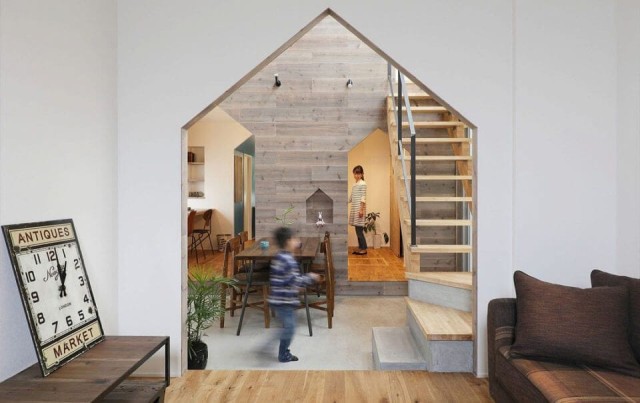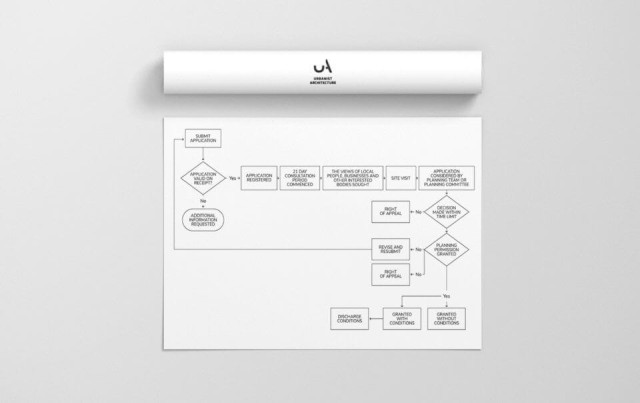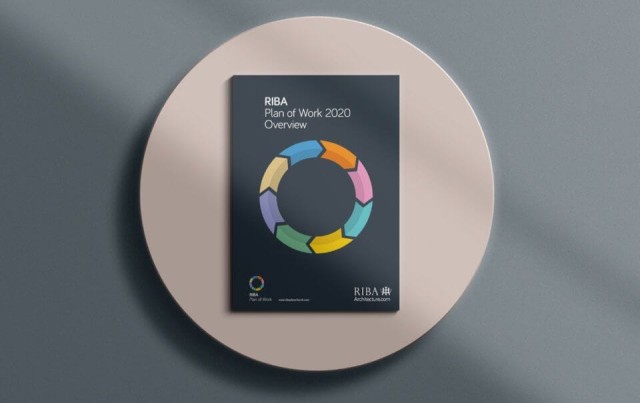Read next
The latest news, updates and expert views for ambitious, high-achieving and purpose-driven homeowners and property entrepreneurs.


Isn’t it a frustrating feeling when you find the perfect development opportunity, and then you find out it’s just out of your reach financially?
You feel you’ve got the skills, the passion and the commitment to make the development the best that it can be, but your developing wallet is holding you back.
Have you considered spreading the risk and making the development affordable via a joint venture in property development (JV) with another party?
If not, you really should.
In this article, we’ll cover the fundamentals of setting up a joint venture in property development.
And to that end, we’ll divide the following post into five chapters.
Without further ado, let’s dive in!

Before we do anything else, it’s important to have a sense of what we mean when we talk about a joint venture in property development. Below, we’ll review some basic questions to help get us started.
As we’ll find out in this article, there are many different types of joint ventures, but all of them share one common feature: they are a combination of partners, pooling their resources (financial or otherwise) to maximise efficiency and output whilst minimising financial risk.
Though there are many ways to vary the type of arrangement you have with your JV partner or partners there are four main types:
The smaller the project, the less appropriate it is to have large, complex joint venture agreements, as the legal costs of setting up such a venture can quickly erode any potential profit. The converse to this is of course that larger, more complex developments often need a meatier type of JV structure.
But how do you choose which approach is best for you?
Keep reading to find out more...

Now that we have a broad understanding of what we mean by ‘joint venture,’ let’s look further into some of the key elements of this type of partnership.
When it comes down to the nitty gritty of getting your development underway and ultimately completed, it’s incredibly important to be able to trust and get along with your joint venture business partner or partners. This is also important when it comes to the distribution of liability. Two friends with an equal stake may be happy to share the liability, whereas multiple investors with no prior dealings with each other may want a structure that enables them to limit their liabilities.
It’s important to consider a structure which limits liabilities and has the option to ring-fence losses. Property development can be tricky and carries huge risk for developers and their partners at every juncture of the process.
When considering the structure of a joint venture, the funding arrangements are an extremely important factor in your decision-making process. Is the funding split equally between two investors? Is it a series of smaller, different sized investments? All of this will have to be ironed out so your investors can consider and protect their position(s).
You may think that changing the arrangement between investors could be an option part way through the project, or you may feel that, at some point, further investment from a newly interested party will likely be required. If so, you need flexibility built into your agreement.
Boring though it may be, tax implications are often at the heart of setting up a JV, particularly in certain types of structures. All parties need to consider the role of tax and understand how it affects their position. Again, this is an area where independent, professional advice is something you should seek and be willing to pay for.
In creating a JV structure, you should be mindful of who will be managing your project on a day-to-day basis and how hands-off or silent various investors will be. Is a limited company board structure an appropriate way to go? There’s a lot to consider here.
This is often overlooked but it might be prudent to prevent the details of certain investors from being made public. Certain types of joint venture structures allow for this if it is felt to be important or a deal breaker.
How will you go about exiting the project when it is finished? Will you sell the property as a straight up property or will you sell it as a company? There are joint venture structures which are good for one, but not the other.

Now that we’ve reviewed the most important factors, let’s have a look at the different types of joint venture agreements.
Whilst outlining each of the options available, we will also talk through some of the important pros and cons of each structure.
These are among the most frequently used arrangements in the UK. Under this type of structure, multiple parties enter into a contractual arrangement to design and build a property or some other development.
By and large, they are quick and painless to set up and, as such, are not time consuming. They, therefore, won’t distract you when you need to be focussing your attention on other areas. Each partner is taxed on their own profits, and debt liability is not normally shared unless there is a specific clause in the agreement stating otherwise. Partners can, helpfully, retain full control of their own assets too, which is important for many investors.
There are some downsides, however – most notably, the risk associated with the creation of a partnership. This can mean increased liability and can make raising funds difficult, as the partnership itself is not a legal entity and cannot own or purchase assets.
You may hear this type of arrangement being referred to as a Special Purpose Vehicle (SPV) or a JV company. This is the most commonly used structure in the UK without question. It allows the development itself to be made into a limited company with the partners/investors becoming shareholders of this company.
When you set up this type of structure, there are clear governance lines and agreed objectives for your development. Liability is usually directly proportionate to the amount of share capital per partner, and the company itself can own assets. From an exit strategy perspective, the company can be sold when the development is complete by selling the shares as well as the assets. This offers flexibility in terms of income streams from the development.
There are some downsides to this type of arrangement, however. Chief among these are the twin burdens of enhanced reporting and compliance, which add to the amount of admin and cost incurred by the partners. Although the limited liability element sounds like a no-brainer, in reality it can mean that guarantees have to be arranged for additional funding as well as the possibility of double taxation at the company (or corporation tax) level and the individual (or income tax) level.
This is an arrangement whereby two or more legal persons join together in order to pursue a profit. A partnership can be formed without a formal agreement, but most often, partners will enter into an agreement to trade.
One of the main advantages of this type of arrangement is that the partners themselves draw up the partnership agreement, and it is therefore not as legally restrictive as other types of arrangements. Since it’s transparent, each partner knows exactly where they stand with each other. Only the individuals are taxed – not the partnership. Moreover, if they prefer, the partners are entitled to a certain level of confidentiality.
Now for the downsides. In a limited partnership arrangement, the general partner has unlimited liabilities for the whole venture; needless to say, this is a major risk to take on. And if you’re a limited partner, you are forbidden from managing the business in any shape or form.
It can also be tricky to raise any extra capital if required as the partnership is not a legal entity, and if any of the partners leave, a new partnership would have to be formed which can be time consuming.
An LLP is somewhat of a halfway house between a company and a partnership arrangement, and will be seen by many as the perfect compromise. In essence an LLP is a separate legal entity, so it has the same benefits as a company set up. But it’s as if, from a tax perspective, the arrangement was a partnership; all partners are taxed on the profit. As the name implies the LLP means that liabilities are limited for each of the partners.
As always, there are negatives. For instance, there are increased admin responsibilities, and the LLP can be undermined by the required support needed for additional financing arrangements like guarantees.

With a general understanding of some of the most common types of JV structures, we are now ready to explore the world of finance. We’re going to cover a few topics in this section; namely:
Let’s get started!
First, it’s important that we have a general understanding of the term ‘finance’. For starters, when we talk about financing, we refer to the process of providing funding for business activities.
Securing finance is generally reserved for larger scale developments, whether they are new build, renovation, fit out or regeneration projects. Financing is not something which is generally secure for smaller scale projects, particularly those which are residential/domestic in nature. Other types of bridging finance are generally more appropriate for developments such as these.
In the following two sections, we’ll go over some initial finance-related questions.
In what instances is finance necessary?
The first determinate factor is the size of the development. For large scale projects it’s not uncommon for ground up finance to be sought which includes everything from the initial purchase of the land right through to final construction and sales fees.
It’s also possible for the financial investment to make up to 80% of the actual building costs, so the developer(s) still have large sums of capital to track down themselves; however, if you are in possession of a larger portfolio of properties, you could offer some of these as a guarantee (security in lieu of capital).
How do you plan your development?
The type and degree of finance sought is often governed by the type of build you are undertaking. Here are the different types of building works associated with property development.
Refurbishment: Refurbishment is a relatively light redevelopment project which is generally limited to moderate aesthetic work or some re-gigging of internal space rather than a major structural change or extension. Because of the short time scales associated with a project like this, the best type of finance to use is a small bridging arrangement, which is similar to (but not the same as) a short term mortgage with a high annual rate.
Heavy renovation: Heavy renovation is more than just a basic refurbishment and will likely include some structural changes or even a small amount of new build extension work. As such the project tends to last longer, which means a standard bridging arrangement may not be suitable; longer term arrangements or short term commercial mortgages are more realistic options for this type of development.
Ground up development: A group up development is a major undertaking which requires the input of professionally qualified and experienced staff – from architects at the design stage to contractors at the construction phase. Finance will be needed over an extended period and you may even need to enter into complex arrangements with different third parties.
It can be difficult to differentiate between the various finance options; so we’re going to try to help you wrap your head around them in this section of the article. Here we go!
These are mortgages like you have on your home, but they are specifically for the development of commercial properties like shops, warehouses, factories or pubs.
Because they are mortgages, they are often the most straightforward and easy to understand financial arrangements.
Let’s say that a Café currently rents their property but has the option to buy it; the café owners want to take up this opportunity as the mortgage payments are an investment whereas continuing to pay rent is akin to throwing money away. Owning the property means that they can add the outside seating area that they have always wanted but have not been able to achieve because of the Landlord’s resistance. A commercial mortgage is perfect in this scenario.
As the name suggests this type of finance arrangement is used by those buying property at auction. Bids at auction need to be settled rapidly (usually within 28 days at the very least) and these types of finance arrangements are set up specifically to be approved very quickly indeed.
So let’s say you’ve picked up a real bargain at auction: the right area, the right size and the opportunity to create something of real value. You need to move quickly from a finance perspective to actually secure this property; you’ve already informed your bank that you may need this finance as soon as possible. Now, all you have to do is make a call and get it sorted.
As the name suggests, this is a short-term option designed to quickly cover some relatively low, short-term costs; they’re quick and time-limited arrangements. That’s not to say that they can’t cover the whole cost of the development. If you need to complete a small refurbishment with only minor aesthetic improvements, obtaining a bridging loan could be ideal to take you from start to completion.
Let’s say that a developer has found a vacant shop which needs some modernisation but is otherwise a sound property; a bridging loan could be perfect to fill the finance void between purchase and refurbishment.
So how do you actually apply for this type of financing? The first thing to say is that you should always do your homework at the beginning and have an idea of what the best option might be for you (this article is a great place to start!). But you should also do a bit of research on the potential lender as well. Be ready to ask pertinent questions around the terms of the arrangements.
Below, we’ll touch on some of the key points to consider when applying for financing, and then we’ll provide a checklist you can refer to when submitting a finance application.
To begin with, it’s helpful to articulate your strengths. A track record in property development will help you, but it’s not an absolute prerequisite. However, you should be aware that, if you’re a novice property developer, it may be a tad unrealistic to secure a large investment for a major project your first time out.
You have to understand that any lender bases their decision to lend you money on their assessment of how likely it is that the project will come to fruition and guarantee a return on their investment. You must be able to clearly articulate how you will ensure the success of the project in terms of income or one-off profit.
In this regard, generating income is the name of the game and income is determined by the rental yield, which is a percentage of the purchase price.
If you’re looking to secure buy to let funding, the first thing you will have to demonstrate is a minimum income. If you have multiple properties, you may find this to be a precluding factor in securing more funding. If this is the case you will have to demonstrate competence in managing your portfolio and finances.
GDV is your Gross Development Value, which allows you to establish that your development is worthy of being approved for funding. As a rule of thumb a worthwhile investment is one where the lender can loan 65% of the GDV, even if this 65% is 100% of the build cost.
To help you keep your affairs in order, we’ve provided a finance application checklist.
You’ll most likely need to offer the following when securing finance:
By and large, these are some of the most important considerations when it comes to securing financing. Again, if you’re a beginner, be sure to do your homework and, if possible, hire a professional to help you find your way.

It’s fair to say that there are some clear benefits to establishing a JV agreement to help deliver your development. At the same time, you must remain mindful of the apparent disadvantages (read: risks) associated with this sort of arrangement. Below, we’ll briefly outline the pros and cons of a joint venture.
The benefits of joint ventures include but are not limited to:
With so many different property development and investment options – from buy-to-let to commercial new builds and from residential to fit out projects – it’s crucial that your joint venture structure is appropriately aligned with the underlying asset. With the optimal structure, you can maximise the benefits listed above.
Of course, as with everything in this world, it’s important to consider the downsides of a joint venture agreement – namely the associated risks. Risk mitigation should always be high on your list of priorities. The risk of your project will increase if the following points aren’t taken into consideration at the outset:
Remember, each of these must be considered at the beginning of your project – all the way back at the initial design stage. Risk minimisation starts on day one.
So there you have it; hopefully you’re in a position to understand what type of joint venture in property development is best for your project and what types of finance options are available to you.
I’m sure you’ll agree that being clued up and on the front foot with these issues can save you an awful lot of work and heartache further down the line in your development.
…all you’ve got to do now is get the job done!
At Urbanist Architecture, we understand that property developers are facing all kinds of risks with each proposal. Prior to obtaining consent, the entire project is purely hypothetical, which means planning permission must be secured at all costs. For this reason, we’re looking to team up with the best and brightest in London and beyond.
When you partner with Urbanist Architecture, you’ll receive our full attention. In fact, we’re willing to invest part of our planning fees into your development project in exchange for a share of the profits. With our expertise, your chances of a successful application will significantly increase. Plus, our investment will help you reduce costs by saving on planning fees. Although we typically make these offers to existing contacts, if you have a project with a potential GDV exceeding £5 million, we’d love to hear from you.

Urbanist Architecture’s founder and managing director, Ufuk Bahar BA(Hons), MA, takes personal charge of our larger projects, focusing particularly on Green Belt developments, new-build flats and housing, and high-end full refurbishments.
We look forward to learning how we can help you. Simply fill in the form below and someone on our team will respond to you at the earliest opportunity.
The latest news, updates and expert views for ambitious, high-achieving and purpose-driven homeowners and property entrepreneurs.
The latest news, updates and expert views for ambitious, high-achieving and purpose-driven homeowners and property entrepreneurs.










We specialise in crafting creative design and planning strategies to unlock the hidden potential of developments, secure planning permission and deliver imaginative projects on tricky sites
Write us a message